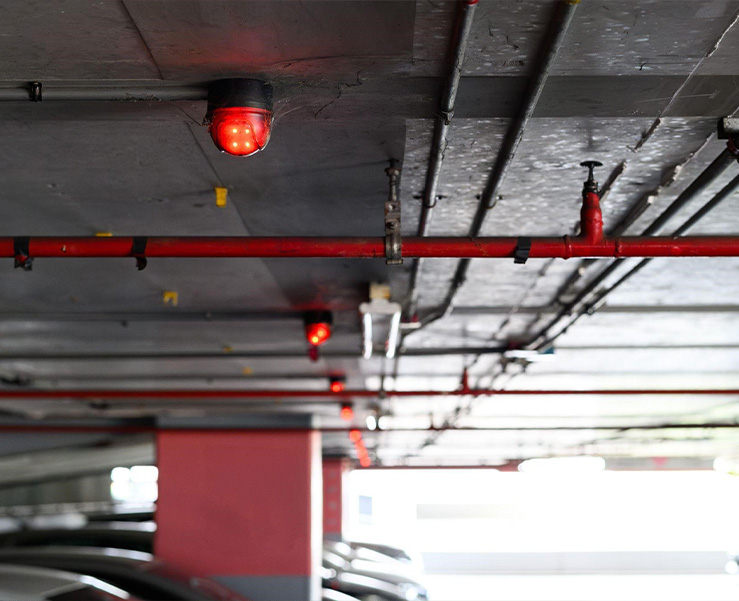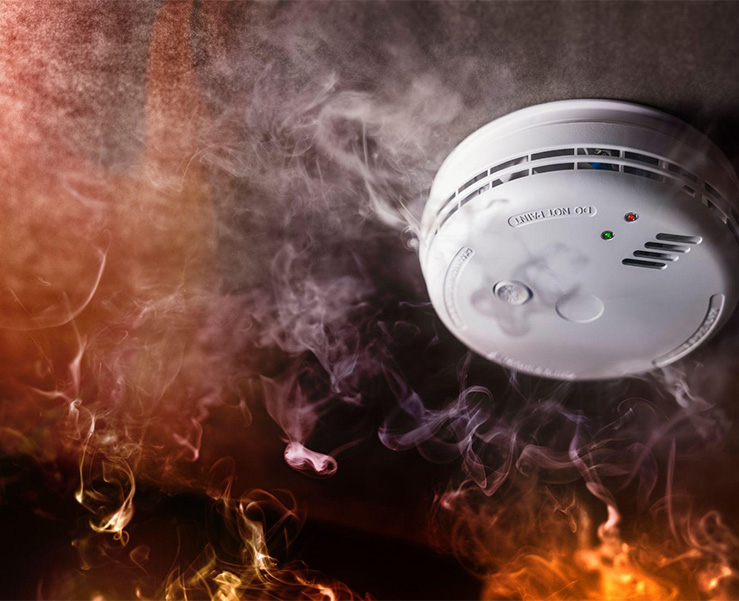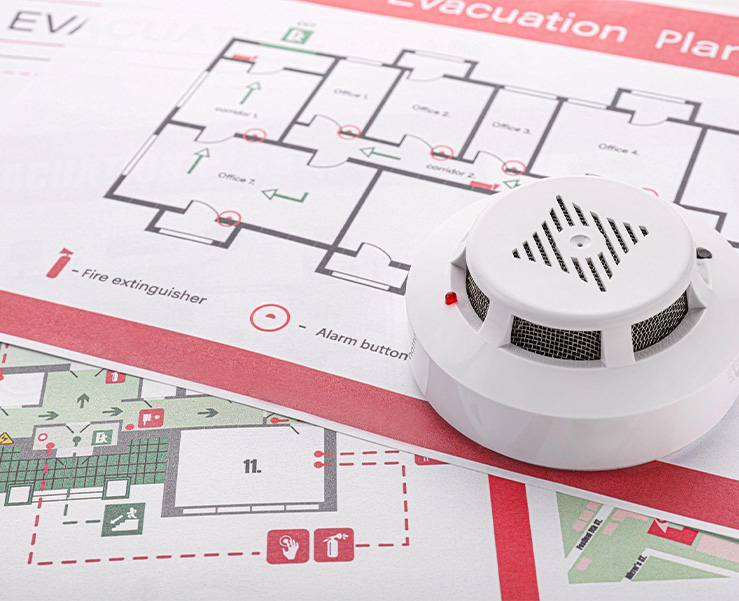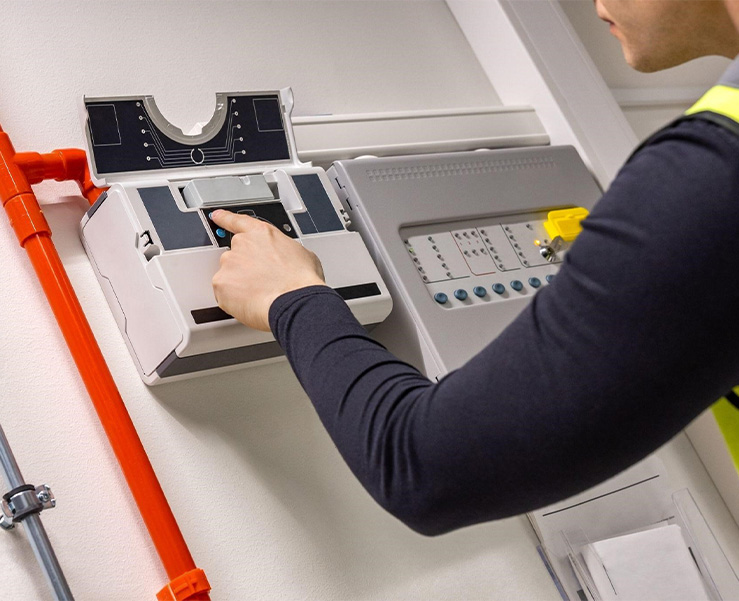Blog

JANUARY 31, 2025
Imagine where a fire goes unnoticed until it's too late—frightening, isn't it? That's why fire detection systems have become indispensable in our daily lives. Think of them as vigilant guardians, constantly on the lookout for even the slightest hint of smoke or heat. With their swift alerts, these systems not only help avert disastrous outcomes but also provide precious extra minutes for a safe escape.
It's about taking bold steps towards a safer future for everyone, transforming mere buildings into protective sanctuaries. By embracing cutting-edge fire detection technology, we are taking an active stand in protecting what matters most: our property and, more importantly, our lives.
A fire detection system is an essential component of building safety, designed to identify the early signs of fire and alert occupants to initiate a timely response. These systems consist of various detection devices that can sense elements associated with a fire, such as smoke, heat, flames, or gas presence.
By rapidly identifying these changes in the environment, fire detection systems trigger alarms that help prevent escalation, allowing for quick evacuation and intervention by emergency services.
Smoke Detectors. These devices are engineered to detect smoke particles in the air, often indicating a fire hazard. They utilize different technologies, such as ionization or photoelectric sensors, to sense smoke presence.
Heat Detectors. Designed to sense changes in temperature, heat detectors activate when the ambient temperature reaches a preset threshold or experiences a rapid rise. They are ideal for areas where smoke detectors might give false alarms.
Flame Detectors. These sensors detect the presence of open flames by identifying certain wavelengths of light produced by fire, providing rapid response in environments with high ignition risks.
Gas Detectors. Sensitive to specific gas concentrations, such detectors alert occupants to potential fire threats when combustible gases are present.

Conventional Fire Alarm Systems. These systems divide a building into zones and use basic detectors connected to a central control panel. When a detector is triggered, the system alerts occupants to a potential threat in a specific zone, though not pinpointing the exact location.
Addressable Fire Alarm Systems. These more sophisticated systems assign a specific address to each detector or device, allowing the central control panel to identify the precise location of an activated detector. This precision enhances response time and efficiency.
Wireless Fire Alarm Systems. Providing flexibility, these systems utilize wireless technology to connect detectors and devices to the control panel, minimizing the need for extensive wiring. They are particularly suitable for retrofitting older buildings.
Smart Fire Detection Systems. Integrating with IoT (Internet of Things) technology, smart systems allow remote monitoring and management via mobile apps or computer platforms. They offer enhanced analytics and real-time notifications.
Aspiration Smoke Detection Systems (ASD). These high-sensitivity systems actively sample the air through a network of pipes, detecting smoke particles much earlier than conventional detectors, making them suitable for sensitive environments.
Hybrid Fire Detection Systems. Combining elements of conventional and addressable systems, hybrid systems offer flexibility and scalability, making them suitable for various building sizes and types.

Fire detection systems are equipped with sensitive devices that recognize the earliest indicators of a fire, such as smoke particles, heat increases, or carbon monoxide levels. By providing immediate alerts, these systems enable quick responses, allowing building occupants more time to evacuate safely and efficiently.
Early detection is essential in preventing small fires from escalating into larger, more destructive blazes, thereby saving lives and reducing the likelihood of severe injuries. The early warning not only assists the inhabitants of the building but also expedites the arrival of emergency services, optimizing their efforts to contain the situation.
The prompt detection of fire symptoms allows for rapid intervention measures that can significantly limit the extent of damage to property. By catching fires in their incipient stages, these systems prevent the spread of fire and smoke, thereby safeguarding important assets and infrastructure. This protection translates into financial savings, as property owners face lower repair and restoration costs and avoid prolonged business interruptions.
In some cases, the quick action facilitated by fire detection systems can save irreplaceable items, such as important documents and sensitive data, which would otherwise be lost in a more advanced blaze.
Fire detection systems are designed to create a safer environment for everyone present in a building, including employees, residents, and visitors. With features like loud audible alarms and bright visual signals, they make sure that all individuals are immediately alerted to the risk. This immediate warning helps guide people to designated escape routes, reducing panic and confusion during an evacuation.
Fire detection systems are indispensable in buildings occupied by vulnerable populations, such as schools or hospitals. They provide an orderly and effective response by offering clear directives and guiding occupants toward safety.
Fire detection systems help building owners meet the legal requirements set by local and national safety standards. Compliance with such regulations not only avoids potential legal liabilities and fines but also highlights a commitment to providing a safe environment.
Buildings with compliant fire detection systems may benefit from more favorable terms with insurance providers. These providers often offer lower premiums because the risk is reduced when such protections are in place. Additionally, demonstrating compliance with safety codes can bolster reputation and trust among stakeholders, be they clients, tenants, or employees.

Modern fire detection systems are capable of integrating seamlessly with other building security measures, such as sprinkler systems, emergency lighting, and automated building management controls. This integration forms a comprehensive safety strategy that encompasses various potential threats.
In the event of a fire, an integrated approach facilitates coordinated actions. This includes activating sprinkler systems, unlocking exits, and guiding inhabitants through evacuation plans. By doing so, confusion is reduced, and a coherent emergency response is established. This synergy enhances total building security and safety, providing a holistic solution for occupants.
Properties fitted with advanced fire detection systems present a minimized risk profile to insurance companies, often resulting in reduced insurance premiums. By demonstrating an active commitment to fire safety, property owners can utilize these savings to invest further in risk mitigation strategies.
Insurance claims processes also tend to be smoother for properties with reliable fire detection systems, as they provide clear documentation and verification of system activations during incidents. This documentation not only aids in the claims settlement process but also aids in assessing any potential improvements in safety protocols.

Fire detection systems play a vital role in safeguarding lives and property, acting as vigilant guardians against potential disasters. By embracing these systems, building owners not only shield their assets from damage but also create a safer environment for everyone on the premises. Staying informed about the latest technology and regulations is essential for maintaining an effective safety net.
If you are looking for a reliable and quality fire detection system, HSI Security can provide expert solutions that establish early warning, minimize property damage, and enhance safety for all occupants. Our patients and clients can rely on us for cutting-edge technology, seamless integration with existing systems, and compliance with all safety regulations.
Don't leave your fire safety to chance—contact HSI Security today to learn more about how our tailored solutions and dedicated customer support can provide you with peace of mind and robust protection for your property and loved ones. Safeguard your future with HSI Security's unmatched expertise and reliability.
JULY 03, 2024
JULY 03, 2024
JULY 03, 2024